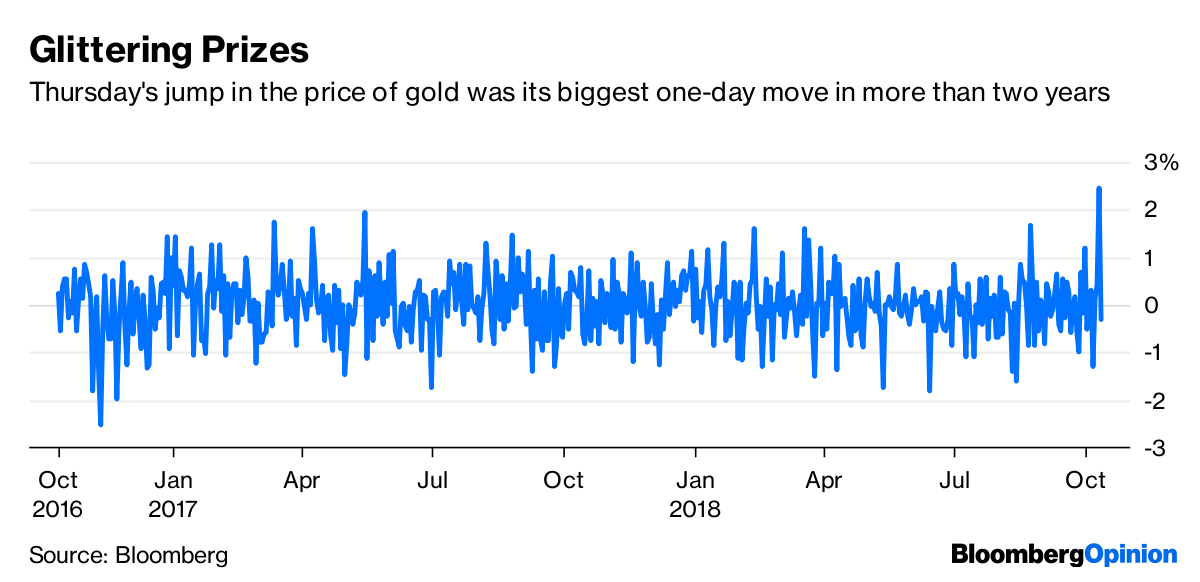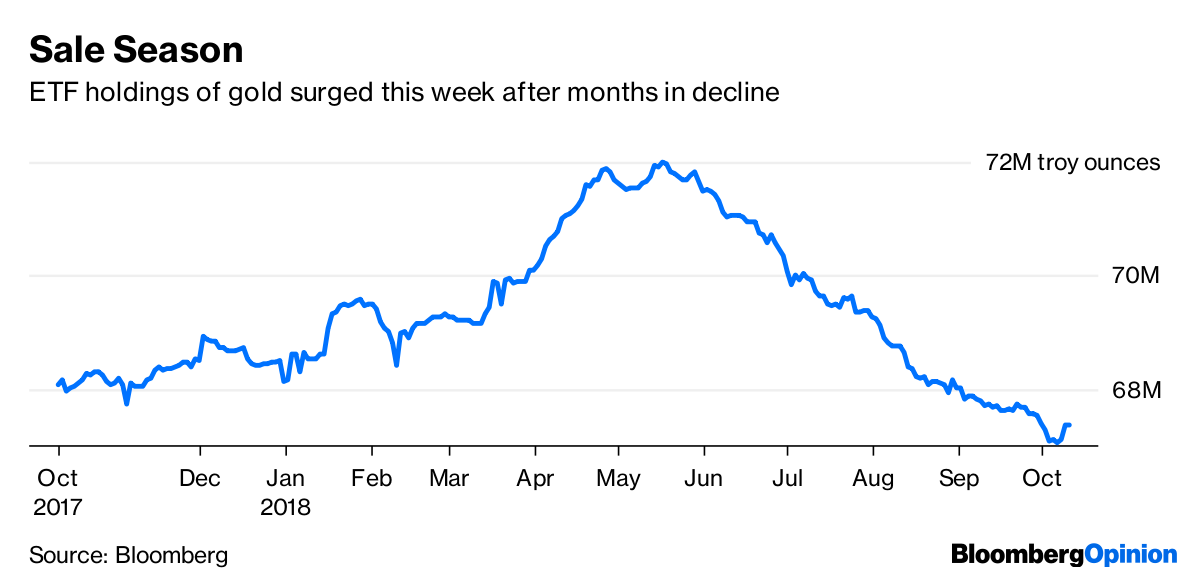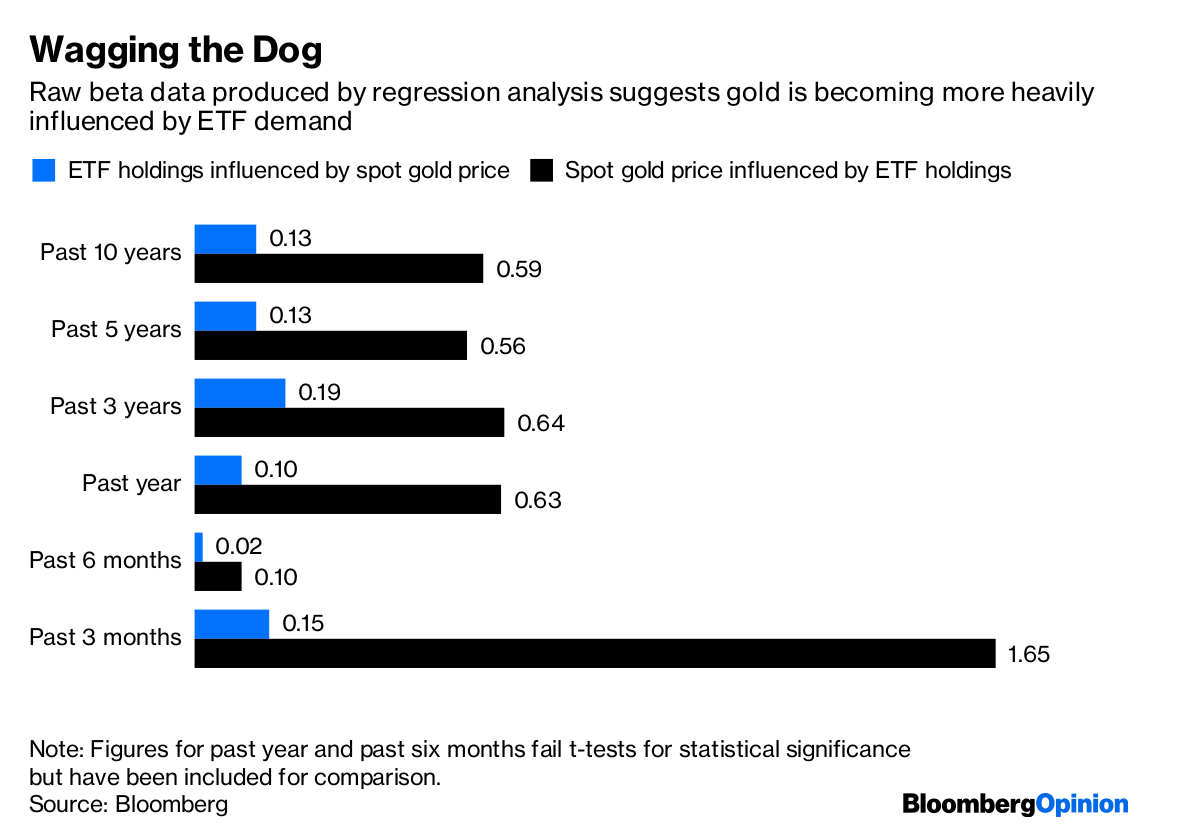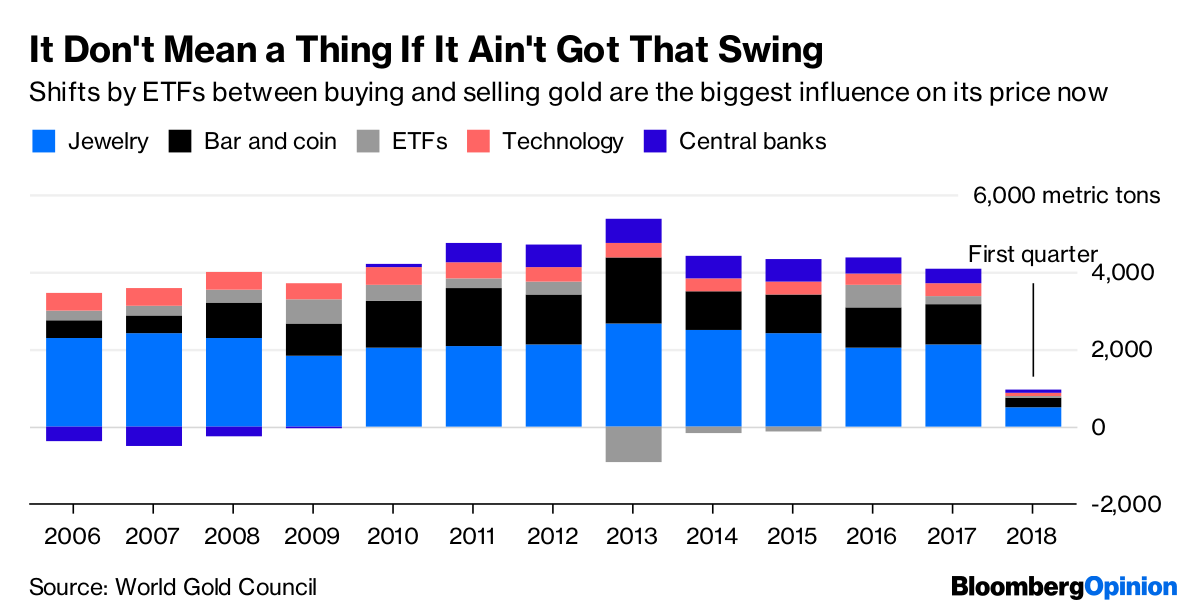By David Fickling
(Bloomberg Opinion) --Gold isn’t like anything else on the market. Ancient, fundamental, eternal – it’s different from all those here-today, gone-tomorrow assets such as Snap Inc. shares and cryptocurrencies. Right?
Wrong. Thursday’s surge in the spot gold price – a 2.5 percent jump to $1,224 an ounce, its sharpest leap in more than two years – looks like confirmation of a trend that’s been developing for a while. The driver isn’t so much time-honored fears about the value of money, but the behavior of exchange-traded funds.

Since hitting a five-year high in May, ETF holdings of gold have experienced an unrelenting decline, paralleling the slump in the spot metal itself. That didn’t really reverse even when equity markets started to slide last week – until Wednesday, when the sum suddenly jumped by 259,116 troy ounces. The next day, the price finally climbed, too.

The relationship between the gold price and ETF holdings is a complicated one, where the biggest question is often which is the tail and which the dog. In the early days of ETFs, when they were seen as products exclusively for retail investors, you’d have expected that the funds followed gold, with mom and pop buyers adding to their exposure whenever the price went up and cutting back when it went down.
In fact, over most of the past decade it’s tended to be the other way around – perhaps in keeping with the fact that about a third of ETF investment in the biggest market for the products, the U.S., is now done by institutions.

If you pick ETF holdings as the dependent variable – the one being influenced – and gold as the independent one, a regression analysis of the last 10 years gives you a raw beta of 0.126, suggesting that the metal’s price has only a modest positive impact on the amount of buying done by ETF investors . The beta for the opposite case (where ETF holdings are driving the metal’s price) is considerably stronger, at 0.59.
That matches the big picture portrayed in demand statistics from the World Gold Council, an industry group. Bar and coin investors, industrial users and jewelry buyers purchase the yellow metal year-in and year-out; and central banks have been doing the same thing ever since they gave up their selling spree in 2009. As a result, ETFs and related funds are the key swing factor in the gold market, driving its slump from 2013 through 2015 when they became net sellers, and helping support its modest revival by turning into buyers in the years since.

That relationship seems to have intensified of late. The raw beta when gold is the dependent variable jumped to 1.65 in the past three months, suggesting moves in ETF holdings are now having an even bigger influence on the spot metal than usual.
In some ways this doesn’t change the old argument for investing in gold, which is that the important beta isn’t related to ETF holdings but to stock-market returns. When fear rises and the value of your equity portfolio falls, the yellow metal still has a mild tendency to climb and offset the losses elsewhere.
Still, those who look on gold as a refuge from the madness of crowds shouldn’t get ahead of themselves. These days, the crowds are in the driver’s seat.
David Fickling is a Bloomberg Opinion columnist covering commodities, as well as industrial and consumer companies. He has been a reporter for Bloomberg News, Dow Jones, the Wall Street Journal, the Financial Times and the Guardian.
To contact the author of this story: David Fickling at [email protected]
For more columns from Bloomberg View, visit bloomberg.com/view





